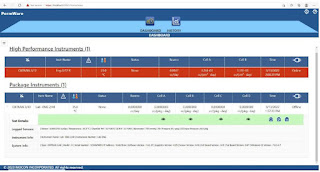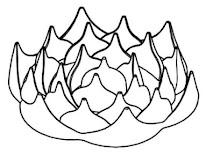Citing Professor McCarthy's view that that a threshold response in the range of 75% of the general consuming public is necessary to prove fame for purposes of dilution, while Opposer Advance Magazine's survey showed at most 45% aided awareness of the mark WIRED, the Board dismissed opposer's dilution-by-blurring claims. As to opposer's Section 2(d) claims, the Board rendered a split decision, sustaining the oppositions to WIRED for clothing, but dismissing the claims as to WIRED, WIRED.FIT, and WIRED & Design for fitness boot camps, fitness instruction services, and the like. This blog post will attempt to hit the high points of the 47-page decision. Advance Magazine Publishers Inc. v. Anna Goncharova, Oppositions Nos. 91245771, 91253089, and 91254140 (October 11, 2022) [not precedential] (Opinion by Judge Marc A. Bergsman).

Likelihood of Confusion: Opposer relied on 17 registrations for WIRED and WIRED-formative marks, for magazines, information services, and retail store services featuring a wide variety of consumer goods, including apparel. Applicant Goncharova conceded that the mark WIRED is at most suggestive regarding a technology-related magazine, and the Board pointed out that suggestive marks are inherently distinctive and are entitled to a commensurate scope of protection.
As to commercial strength, opposer claimed that its WIRED marks are famous. The Board observed that "fame" under the 5th DuPont factor ["strength" would have been a better term in the DuPont decision -ed.] varies along a spectrum from very strong to very weak. Opposer provided sales figure, readership data, YouTube subscriber information, media references, and examples of other publicity. An online aided awareness survey purportedly showed that 45.3% of respondents had heard or seen the mark. The Board found that WIRED "falls on the very strong side of the spectrum ... in connection with magazines covering the digital revolution, culture, lifestyle and technology, as well as for providing information about business, politics, technology, electronics, science, celebrities, entertainment and pop culture via the Internet." Therefore, opposer's marks are entitled to "a broader scope of protection that is normally accorded an inherently distinctive suggestive mark because of their commercial strength."
As to the parties' marks, the Board not surprisingly found them all to be dominated by the word WIRED (including opposer's marks WIRED AUTOCOMPLETE INTERVIEW, WIRED MASTERMIND, WIRED BY DESIGN, WIRED SCIENCE, WIRED STORE, and several stylized versions of WIRED). Although the meanings and commercial impressions of the parties' marks differ, "they share the similarity of 'connection,' either a connection to the Internet or an electrical connection." In sum, the Board found that the similarities of the parties' marks outweigh their differences.
With respect to the involved goods and services, the Board found Goncharova's clothing to be "inherently related" to opposer's retail store services featuring apparel. The Board must assume that these goods and services travel in the same channels of trade to the same classes of consumers.
The remaining goods and services were a different story. Opposer argued, "in essence," that any subject covered by its magazine or online services are potentially related goods or services. The Board disagreed "because opposer's contention comes too close to a claim of rights in gross." There was no testimony or evidence that opposer sells WIRED branded products, nor that any third-party publishers sell products featuring the same mark as their publications. In short, opposer failed to meet its burden to prove the relatedness of Applicant Goncharova's fitness services and opposer's publications and online information services.
The Board therefore sustained the Section 2(d) claim as to Goncharova's clothing but dismissed the claims as to her fitness services.
Dilution: The Board noted that, while "fame" for Section 2(d) purposes is a matter of degree (i.e., relative strength), fame for dilution purposes is an either/or proposition. It either exists or it doesn't. To be famous, a mark must have achieved the status of a "household name." Professor McCarthy posits that "a threshold range of 75% of the general consuming public is necessary to prove fame for purposes of dilution." The Board found that the extent of recognition of the WIRED marks fell short.
Opposer's survey results showed a 45% aided awareness of the marks. "Presumably general public unaided awareness ... is less than the 45% aided awareness." The Board concluded that the WIRED marks are not famous for dilution purposes, and so it dismissed the dilution claims.
Read comments and post your comment here.
TTABlogger comment: WIRED is not a household word in my household, except when I refer to my wired mouse and/or keyboard.
Text Copyright John L. Welch 2022.




































